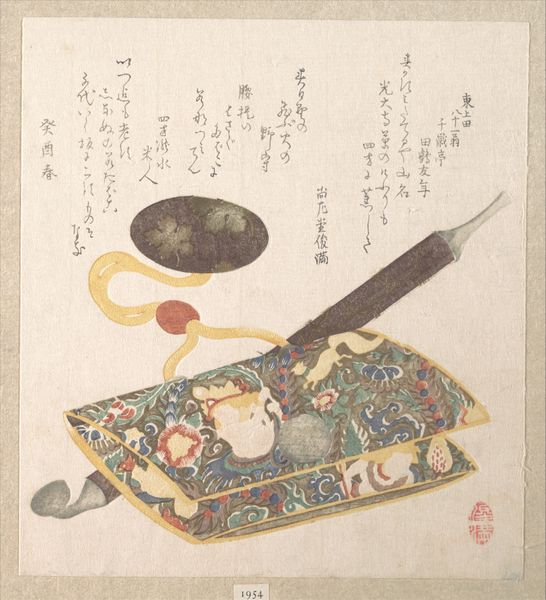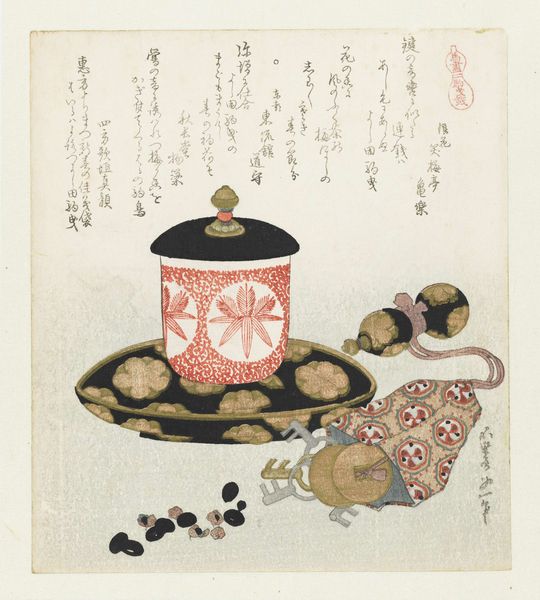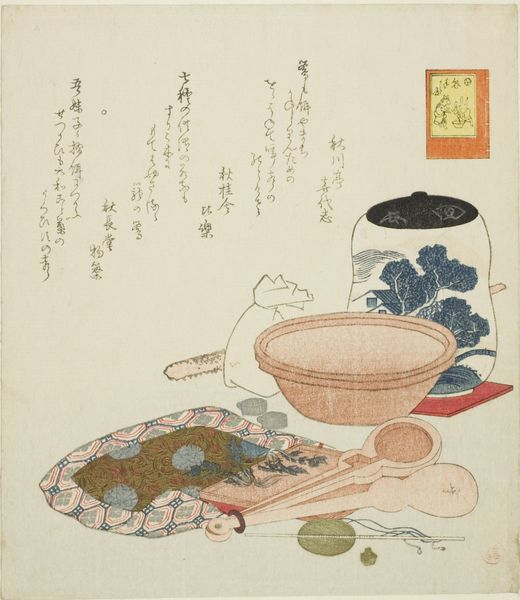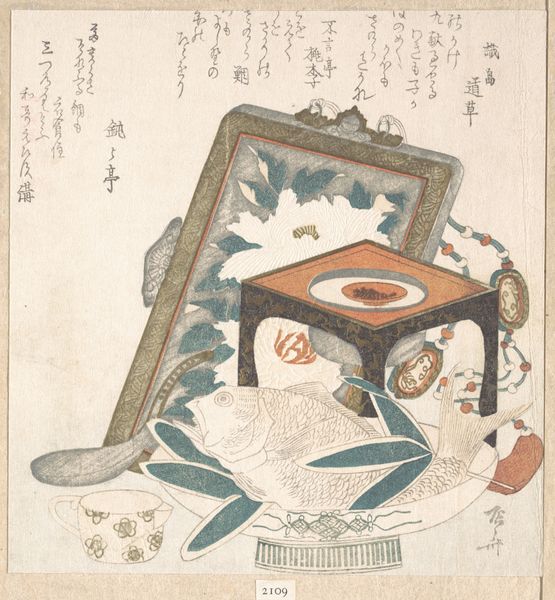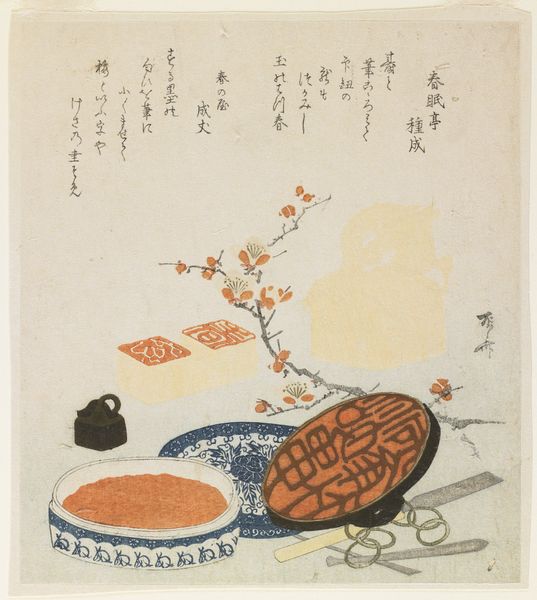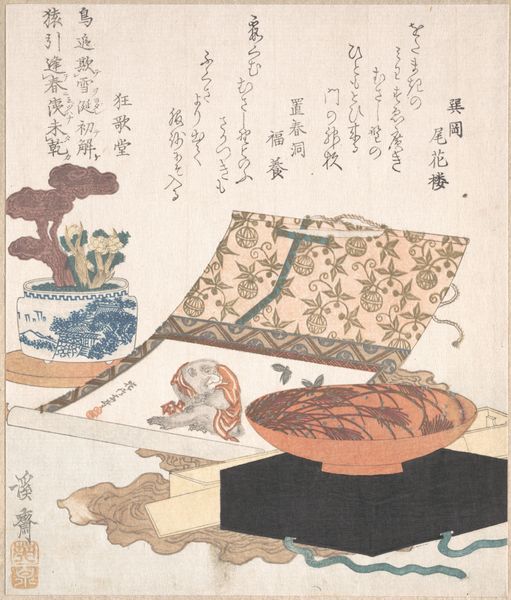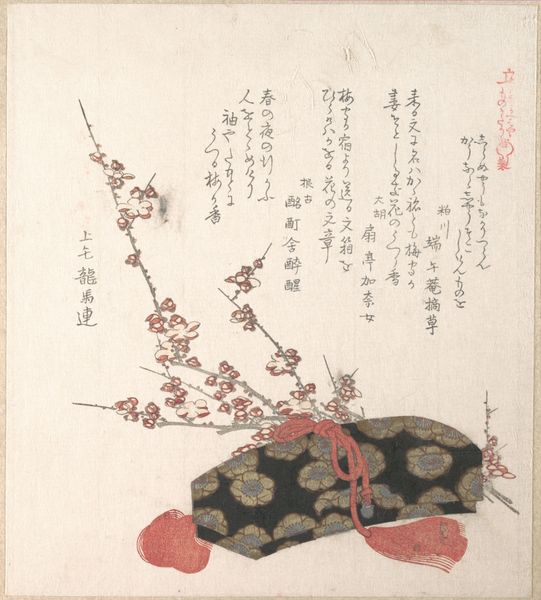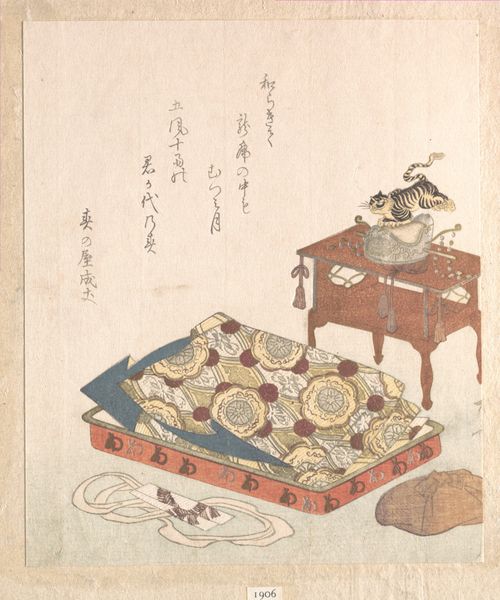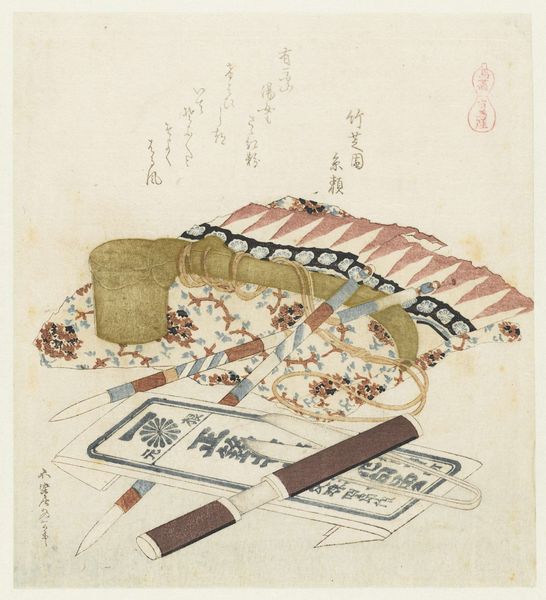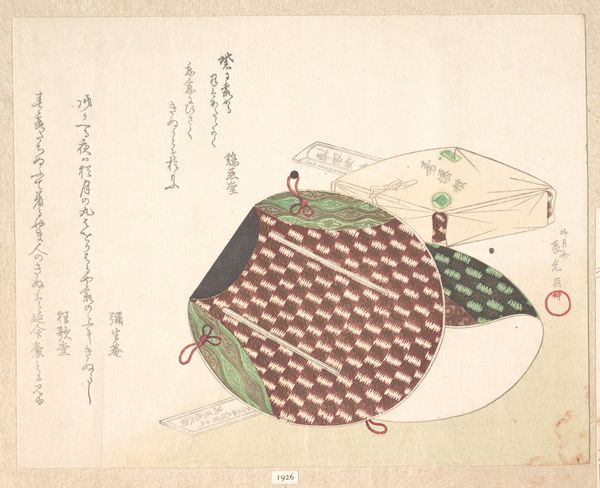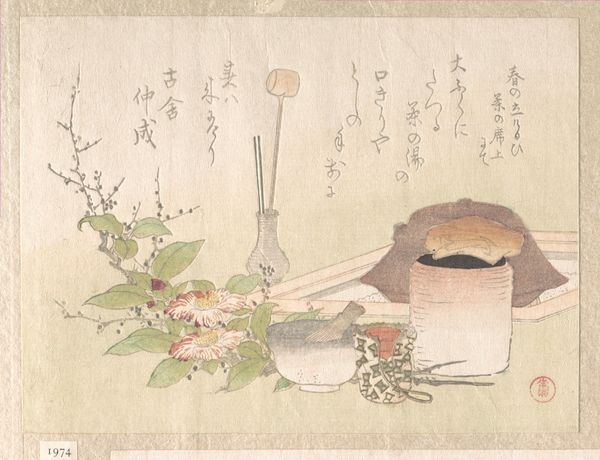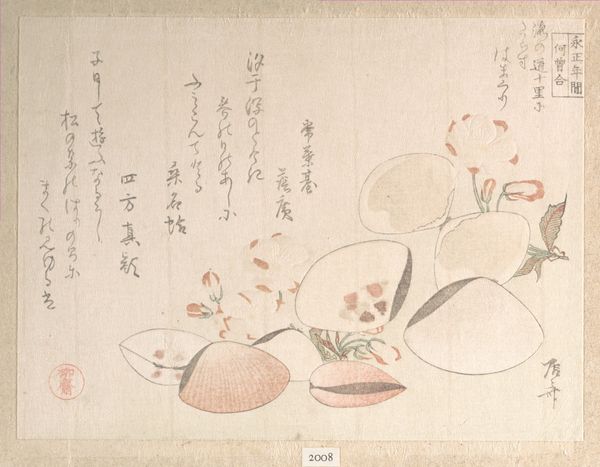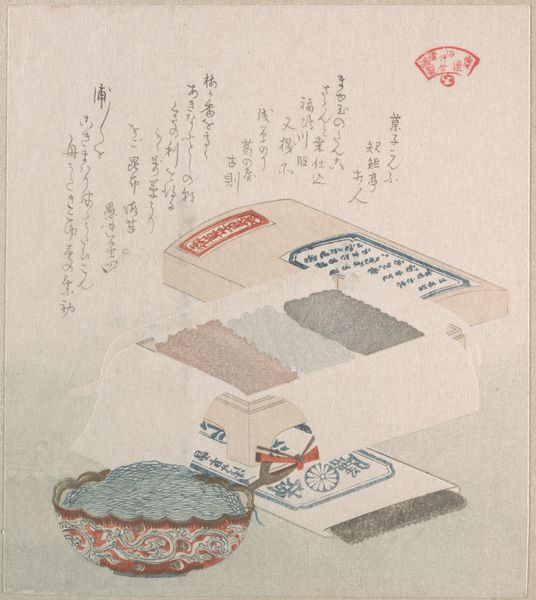
print, woodblock-print
# print
#
asian-art
#
ukiyo-e
#
woodblock-print
#
japanese
#
watercolour illustration
#
watercolor
Dimensions: height 206 mm, width 180 mm
Copyright: Rijks Museum: Open Domain
Curator: This woodblock print, "De plevier schelp" from 1821 by Katsushika Hokusai, presents a quiet composition. I’m immediately drawn to the textures—the smooth drums contrasted against the patterned tsuzumi and what appears to be water behind them. It's the type of quiet still life that has the faint feeling of a commercial design. What strikes you about it? Editor: I agree, it is quiet, I didn't notice the materiality until you pointed it out! I’m curious about the combination of objects; the drums seem to suggest music, while the text... what can we say about that and their relationship? Curator: Let’s think about this in terms of its production. These prints weren’t unique objects made for individual patrons but existed within a system of workshops and distribution. This changes how we can read the script with the image, it creates an atmosphere but ultimately, it is a brand logo. Now what if you think of musical instruments themselves? How would that add another layer? Editor: Ah, I see. The musical instruments point to performance and the labor of musicians within the social context of 19th century Japan, bringing in labor, value and material all at once! So, the print becomes both a representation and a small product itself, existing within similar structures of production and consumption? Curator: Precisely. We can consider the work not just as an isolated artistic creation, but as a point where various systems of material culture intersect. The availability of materials and skill required for this are worth more than just pretty colours, the object represents an entire structure that touches peoples’ daily lives! Editor: That's fascinating. It completely changes my perception of the image, I hadn't really grasped how integral the socio-economic aspect could be. Now I am excited to investigate similar art. Curator: Me too! I hope that by understanding how it came to be, you’ll learn to appreciate art in a whole new light.
Comments
No comments
Be the first to comment and join the conversation on the ultimate creative platform.
